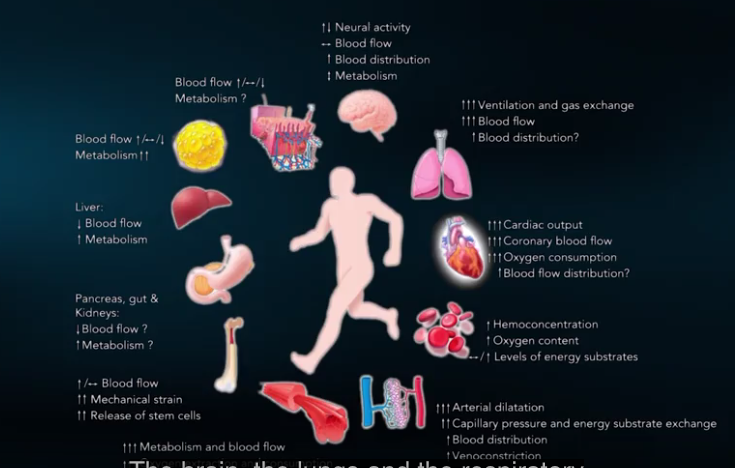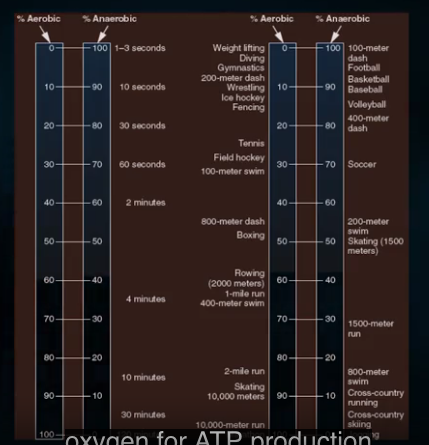Week 1 Science Of Exercise

Energy consumption during exercise.
Principles in Exercise Physiology
Homeostasis - resting body condition and all internal factors such as blood sugar level, oxygen levels, ph level, core body temp.
A physical exercise is a shock to the homeostasis and body works towards adjusting all the internal environment as best as possible.
Overload principle - if you habitually overload a system it will respond and adapt. Regular exercise leads to permanent changes in how our body functions.
Specificity - Physical exercise only leads to changes in specific systems. For example - strength training does not have much impact on cardio vascular systems. Specific strength training only affect muscle groups involved in those exercises.
Reversibility - if you quit exercise, after a while your body will lose adaptions made in training.
Individuality - Magnitude of adaption body goes through after regular exercise depends on genetics.

Calorimetry
- Calculates energy cost of exercise.
- Direct method uses fairly expensive equipment.
- Indirect method calculates oxygen consumed during exercise compared to resting state.
- VO2 increases linearly with exercise intensity.
- As body adapts with regular exercise, it causes max value for VO2 to increase permanently.
- Leading to permanent benefits to cardio vascular systems.
Respiratory exchange ration - amount of CO2 produced compared to oxygen consumed during exercise. Indicates which fuels - fat(0.7) or carbohydrate(1.0) - used during exercise.
Energy requirements
ATP - is the only high energy compound which can be directly used for muscle contraction.
Important to maintain ATP levels for endurance training.
ATP is produced by
- Fats - Fatty acids and glycerol
- Glucose and other sugars
- Proteins - amino acids.

carbohydrate metabolism during exercise
- Carbohydrates are stored in muscle(majority) and liver and blood(very small) as a form of glucose molecules - glycogen.
- Amount of fat stored in body is 50 times more than carbohydrates.
- During an exercise body starts burning fat for energy, but as exercise continues, it switches over to using carbohydrates.
- Carbohydrates stored in muscle provide fuel for exercise and contribute to producing ATP required for exercise.
- Exercise extracts glucose from blood, causing blood sugar level to drop, possible hypoglycemia.
- Carbohydrates stored in liver are used to boost the falling blood sugar level.
- Carbohydrate sparing - regular training helps body adapt to using fat as more fuel source as much as possible, sparing carbohydrates.
- Regular exercise leads more mitochondria matter, which leads to utilizing glucose via aerobic methods. Aerobic methods are more efficient and produced larger amounts of ATP.
Fat metabolism during exercise
- Free fatty acids
- Used for immediate energy source for muscle.
- Mitochondria uses them to produce ATP.
- Triglycerides
- Stored form of free fatty acids.
- Stored in fat cells and skeletal muscle.
- During exercise, fatty acids stored are transported to muscles and then used as energy source.
- There is a very large amount of fat stored in our body.
- Endurance exercises train our body to use fat as an energy source instead of carbohydrates.
Protein metabolism during exercise
- Proteins, in their amino acids form, do contribute to providing energy during exercise.
- Between 5-15% of energy is contributed by amino acids to produce ATP.
- Nitrogen balance - nitrogen input vs nitrogen output. Indicates protein needs of body are being met.
- After exercise protein synthesis increases. So ingesting proteins within first hour after workout, specially strength training, is quite useful.
Recommended protein intake - 0.8grams per kilogram of body weight. For 80kg adult it is 0.8g * 80 = 64grams